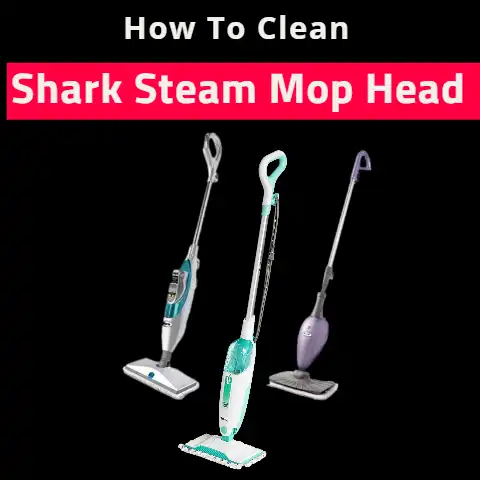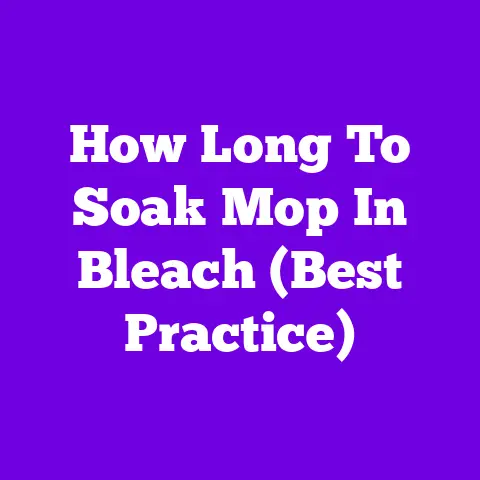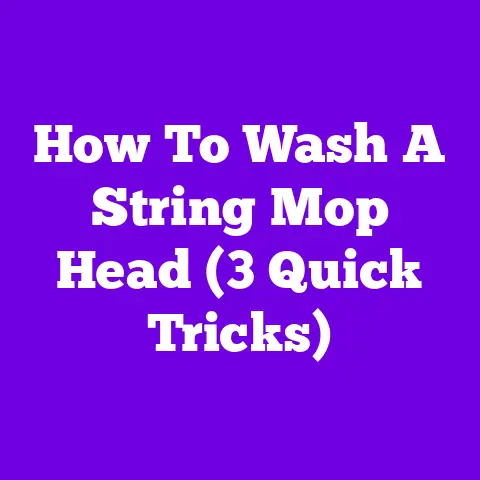Avoiding Tangling Mop Strands When Cleaning Floors (Guide)
Mops are essential tools for keeping floors clean, but tangled and messy mop strands can lead to streaky, dirty floors and damaged mops. Learning how to properly use and care for your mop is key to getting the most out of this cleaning tool.
Read on to learn crucial tips on wringing out mops correctly, storing them properly after use, choosing the right mop for your floors, and more. With the right techniques, you can keep those mop strands straight, neat, and ready to tackle any mess!
Don’t Wring Mops Aggressively to Prevent Tangling
Be Gentle When Wringing Out Mop Heads
One of the biggest causes of tangled mop strands is wringing the mop too aggressively after use. It’s important to thoroughly wring out excess water so the mop doesn’t drip all over your floors. However, you want to avoid twisting, wringing, and contorting the mop strands excessively.
This aggressive wringing can cause the strands to become misshapen, bent, or even break. Additionally, rough handling entwines and knots the strands around each other.
Instead, gently squeeze out excess liquid by pressing the mop head between your hands or against the side of a bucket. Avoid violently twisting, wringing, and tangling the strands. Be patient and let gravity do most of the water removal as you press.
Use a Spin Mop Bucket to Prevent Manual Wringing
An alternative solution to manual wringing is using a spin mop bucket, which uses centrifugal force to remove water.
Simply place the mop head into the spin bucket, close the lid, and activate the spinning mechanism. This automatically extracts water without you having to touch or manipulate the mop.
Spin mop buckets not only help you avoid excessively wringing out liquid, they also save time and effort spent manually wringing. This makes cleaning larger areas much easier.
Look for buckets with adjustable spin speeds and a sturdy mop gripper to hold the mop securely while spinning. The self-wringing mechanism is gentle on mop strands so they last longer without tangling.
Hang Mops Properly to Dry to Prevent Bending Strands
Let Mops Air Dry Completely Before Storing
After thoroughly cleaning your floors, make sure to let the mop dry completely before storing it away. Putting away a damp mop allows moisture to be trapped between the strands. This moisture can then breed mold and bacteria.
Additionally, storing a wet mop causes the strands to dry bent and misshapen. The next time you go to use that mop, you’ll have to deal with tangled, messy strands instead of straight ones.
Make sure to always let your mop dry fully before putting it away. Give it a few hours to allow all excess moisture to evaporate. Test the mop head before storing to ensure no areas feel damp.
Hang Mops Vertically to Keep Strands Straight
When letting your mop dry, the way you hang it makes a difference in preventing tangled strands. Avoid laying mops flat or leaning them against a wall to dry.
Instead, hang mops vertically with the head facing down. This allows gravity to pull moisture down through the mop strands without bending them out of shape.
You can hang mops from utility hooks, the handle of a broom, or a mop drying rack. Some mop buckets come with built-in vertical drying attachments.
The vertical drying position with the mop head facing down allows for even drying and prevents gravity from bending strands to one side. Keeping strands straight as they dry prevents messy tangles.
Choose the Right Mop for Your Floors
Match Mop Fabric Material to Floor Type
An important way to keep your mop neat and straight is making sure you choose the right type of mop fabric for your floors. Using the wrong mop materials can damage floors and cause excess wear and tear on mop heads.
For example, yarn mop heads are ideal for wood and laminate floors. The soft yarn gently cleans without scratching delicate surfaces. Meanwhile, microfiber mops are better suited to tile, stone, and linoleum floors because they can stand up to heavy use without pilling or fraying.
Consult this guide to pick the best mop fabric for your floor:
- Hardwood/Laminate – Yarn mops
- Tile/Stone – Microfiber mops
- Concrete/Outdoors – Nylon or acrylic mops
- Walls/Ceilings – Flat mops with soft fabric
Matching mop fabric to floor type helps the mop glide smoothly without snagging or pulling. This prevents bending of mop strands during cleaning motions.
Consider Steam Mops for Heavy-Duty Cleaning
While typical string mops work well for general floor care, steam mops provide an even deeper clean. Steam mops use hot vapor to sanitize floors and break up stuck-on messes.
The heat and pressure of steam can disintegrate grime that string mops simply push around. Steam also kills 99.9% of germs without need for cleaning chemicals.
Since steam mops use disposable sanitizing pads instead of reusable strings, you don’t have to launder dirty pads. Simply toss them out when done.
The lack of reusable fabric means there’s no need to manually wring out steam mops. So you avoid potential tangling and mess that comes with wringing string mops.
Consider adding a steam mop to your cleaning toolkit for occasional deep cleaning jobs. The steam power breaks up messes that string mops can’t tackle on their own.
Properly Wash Reusable Mop Heads
While disposable mop pads certainly have perks, reusable mop heads have benefits too. They produce less waste over time and tend to clean floors more thoroughly.
However, reusable mop heads come with extra care requirements. Make sure to properly wash fabric mop heads to avoid tangling strands and encourage thorough drying.
Rinse Out Dirt Before Machine Washing
Over time, reusable mop pads accumulate grime, dirt, grease, and residue from cleaning solutions. Tossing extremely dirty mops straight into the washing machine can yield less than ideal results.
Before machine washing, thoroughly rinse mops under running water to remove loose debris. Focus on flushing out dirt from between the strands. This pre-rinse helps washing machines clean more effectively.
Pay special attention to the ends of the mop strands which tend to collect the most soil. Flush out clumps of dirt then wring out excess moisture.
Use Gentle Wash Cycles and Cold Water
Harsh laundry detergent and intense wash cycles can be too rough on delicate mop fibers like microfiber and yarn. This aggressive cleaning wears down mops faster and causes strands to fray.
Instead, opt for gentle, cold wash cycles when machine washing mops. If possible, use a delicate cycle with lower water levels and reduced agitation. Cold water is sufficient to loosen dirt and stains without damaging fibers.
You can add an oxygen-activated cleaner like OxiClean to the wash for extra cleaning power. Avoid bleach and fabric softener which can leave sticky residue on mop strands.
Gentle wash cycles clean mops thoroughly without excessive twisting and friction that leads to tangled strands.
Air Dry Instead of Machine Drying
Just like wet mop storage causes issues, machine drying can bend and knot mop strands. Tumbling around with hot, forced air leaves mops misshapen and messy.
Skip the machine dryer and let freshly washed mops air dry instead. Gently squeeze out excess moisture then hang mops vertically until fully dry.
Not only does air drying prevent tangled strands, it also helps mops maintain their shape and absorbency. The heat of machine dryers can degrade microfiber over time.
Be patient and allow several hours for complete drying before putting mops away. Test for dampness and rearrange strands if needed while drying.
Prevent Tangling With Proper Mop Storage
Storing mops improperly between uses is an easy way to end up with bent, tangled strands your next cleaning session. Use these storage tips to keep unused mops neat and ready for action.
Store Mops Vertically
As touched on earlier for drying, hanging mops vertically prevents strand bending and tangling compared to laying them horizontally.
Designate a small space like a utility closet, pantry, or laundry room for mop storage. Install a couple sturdy utility hooks, a wall-mounted rack, or broom holder.
Slide mop handles through the holders to let mops drip-dry and air out after use. This stops gravity from pulling strands out of shape while they dry.
For convenience, look for mops with holes or hooks on the handles. These allow easy hanging from common household hooks.
Storing vertically ensures the mop strands stay evenly aligned instead of becoming a tangled mess on one side or the other.
Keep Extra Mop Pads Flat
While hanging the mops themselves vertically, lay any extra mop pads flat instead in a basket or storage bin.
Fold pads in half with the scrubby side facing in to prevent dust buildup. Then stack pads neatly on top of each other like folded laundry.
This keeps spare pads from becoming bent or bunched up around the edges. Stacking also helps press out any residual moisture so pads stay fresh.
Having backup mop pads stored properly means you always have a straight, clean replacement ready when your current mop head gets dirty.
Don’t Wrap Mop Strands Around Handle
Some mops come with mechanisms to wrap strands around the handle for storage. However, this tight wrapping can lead to bending, creasing, and tangling of mop fabric.
Even if your mop came with handle-wrapping capabilities, avoid using this feature. Repeatedly compressing strands out of shape ruins mop performance and absorbency.
Your best bet is keeping the mop head attached as normal for hanging vertically to dry and store. Let gravity do the work of keeping strands neatly aligned.
Frequently Asked Questions
How do I untangle my mop if it already has bent and twisted strands?
Straighten out the strands while the mop is damp. Gently stretch and rearrange any strands that became bent while the fibers are still pliable. Allow to fully air dry in the proper vertical position to “train” strands to hang neatly.
Can I use fabric softener or dryer sheets to prevent tangled mop strands?
Avoid fabric softener and dryer sheets as they leave behind a coating residue. This residue attracts dirt and soils floors faster. Let your washed mop air dry naturally without any additives.
What kind of hook should I use to hang my mop vertically?
Look for sturdy utility hooks made of metal that can support the full weight of a wet mop. Install them securely into a wall stud for reliable strength. Avoid light duty hooks which can rip out of drywall under heavy loads.
How can I get my floors really clean if I can’t aggressively wring out my mop?
While gentle mop handling prevents tangling, it can leave floors damp. Go over floors a second time with a dry mop to soak up remaining moisture. Or use fans to speed up drying time. Consider a steam mop for occasional deep cleaning power beyond a string mop’s capabilities.
Which is better – reusable mop heads or disposable pads?
Both reusable and disposable mop pads have certain advantages. Reusables are more economical and environmentally friendly. Disposables require less maintenance and are more convenient. Keep both types on hand to suit different cleaning needs. Prioritize reusable mops for routine cleaning.
Let me know if you have any other mop care questions!






